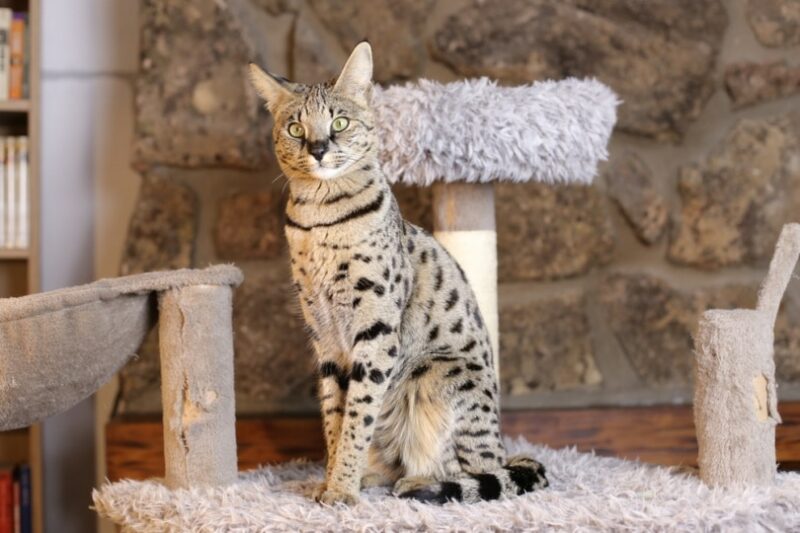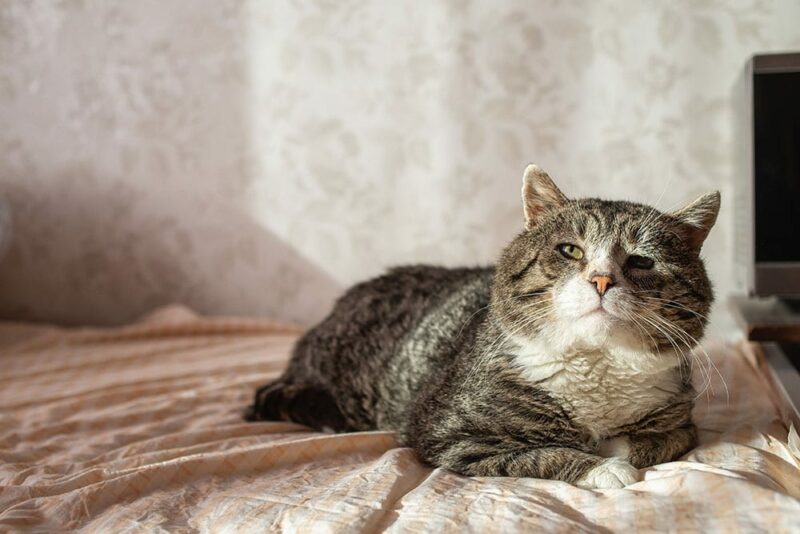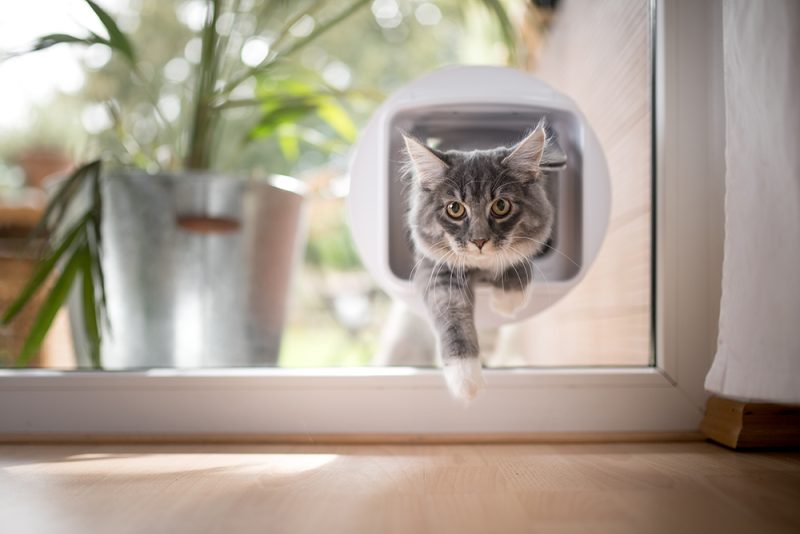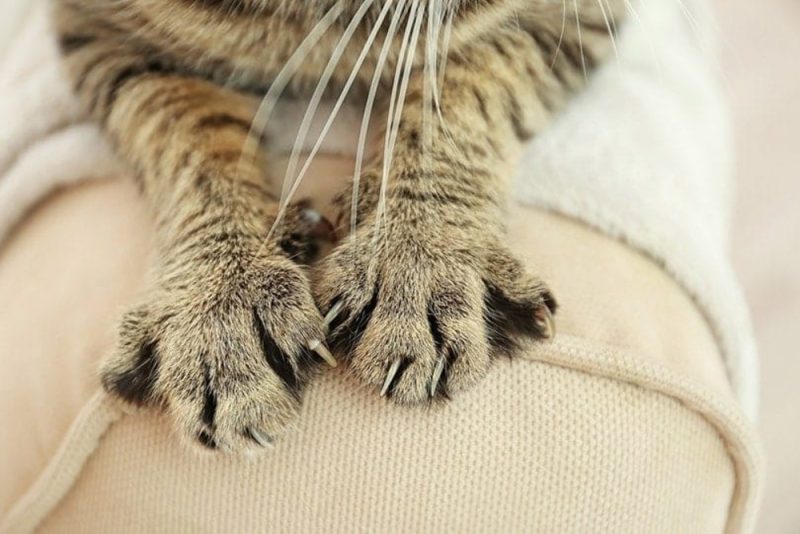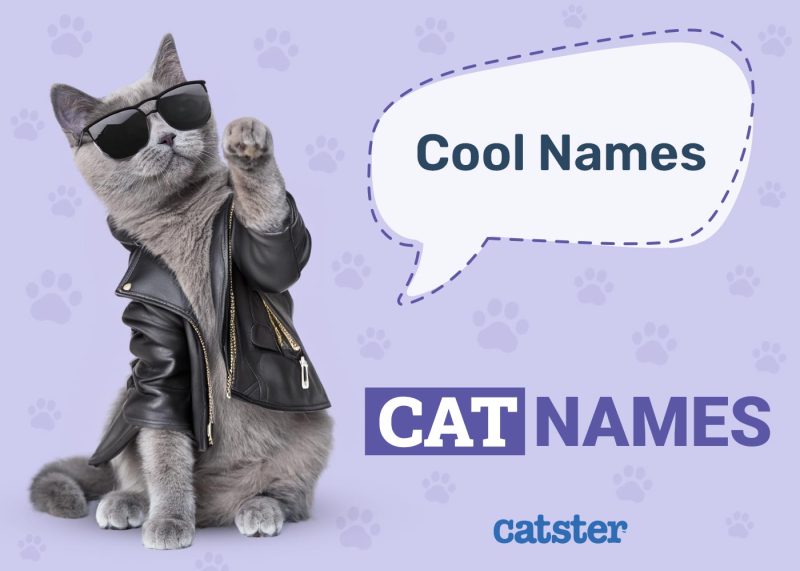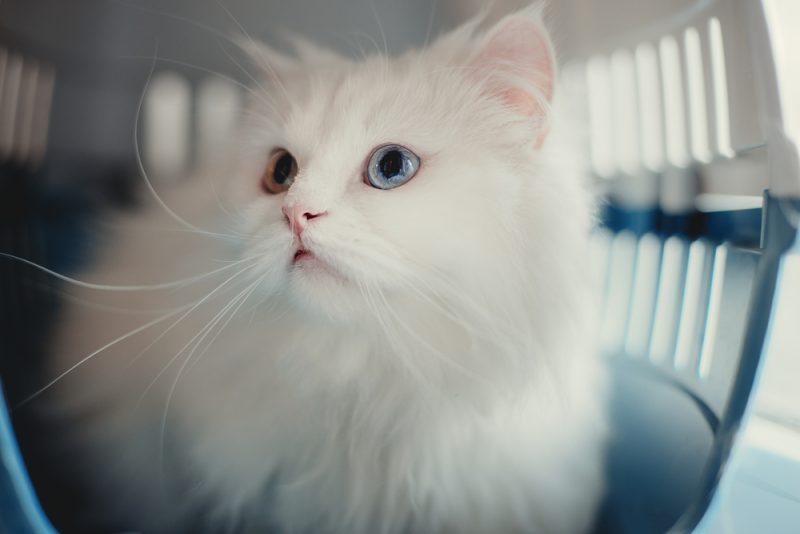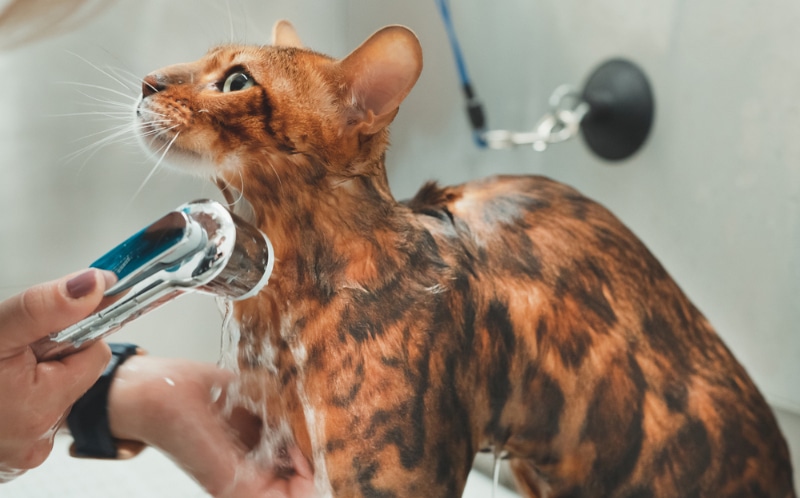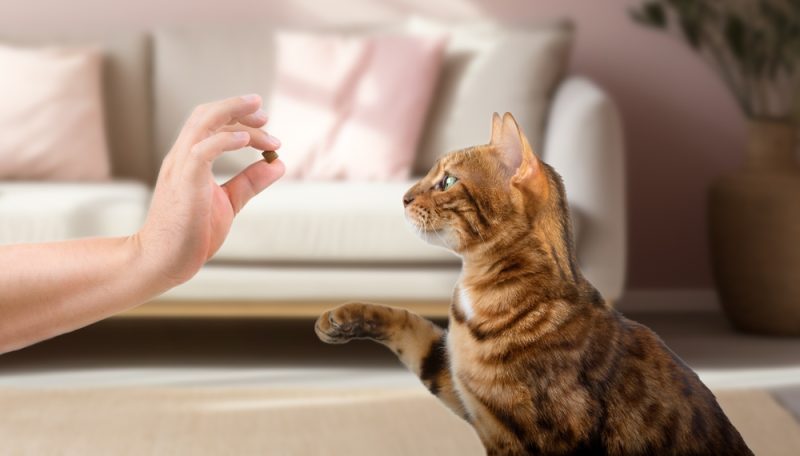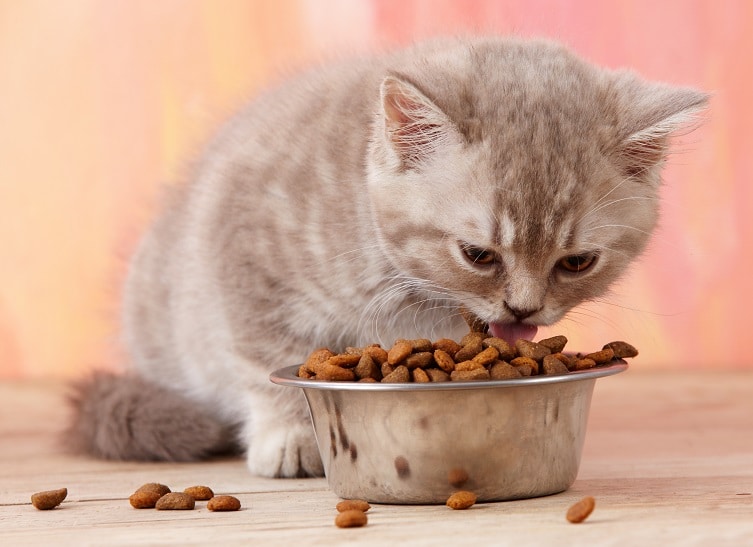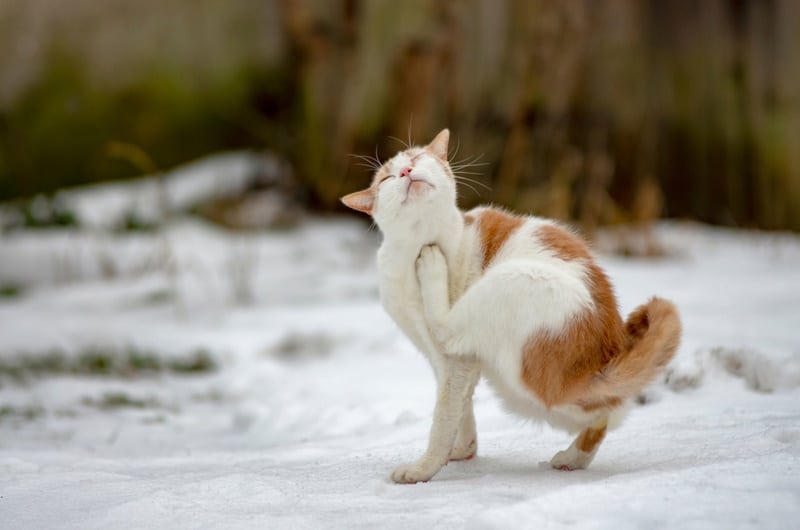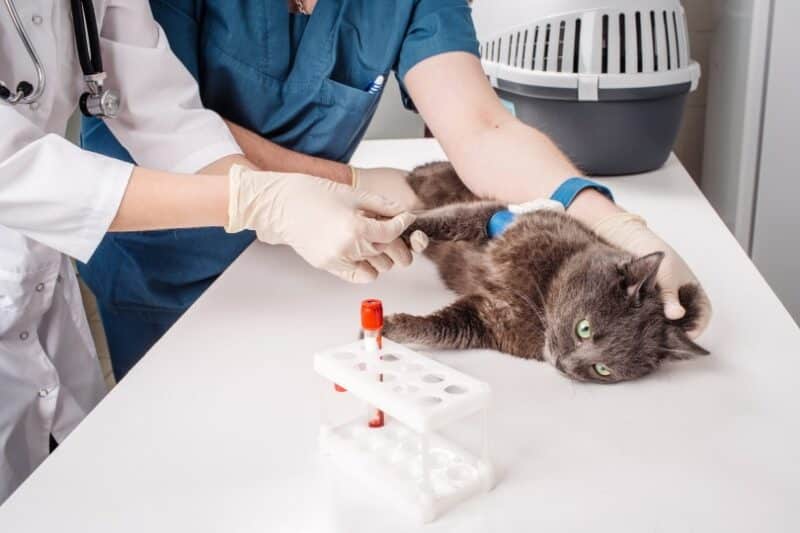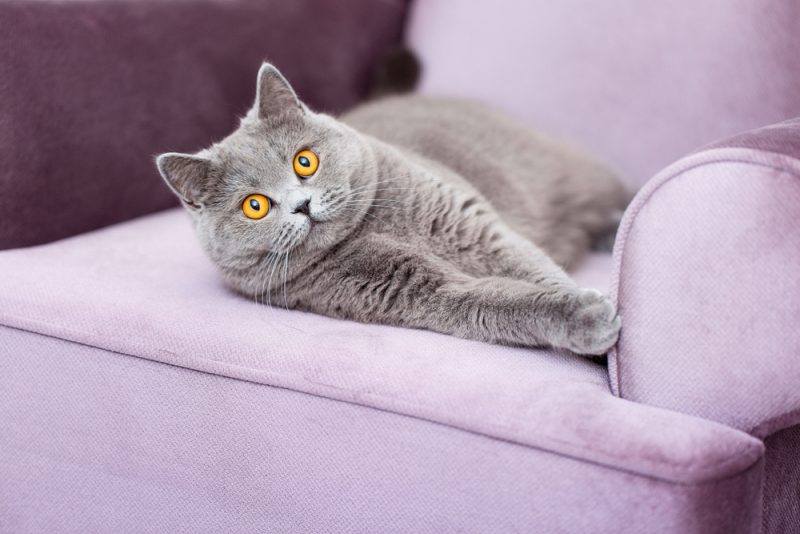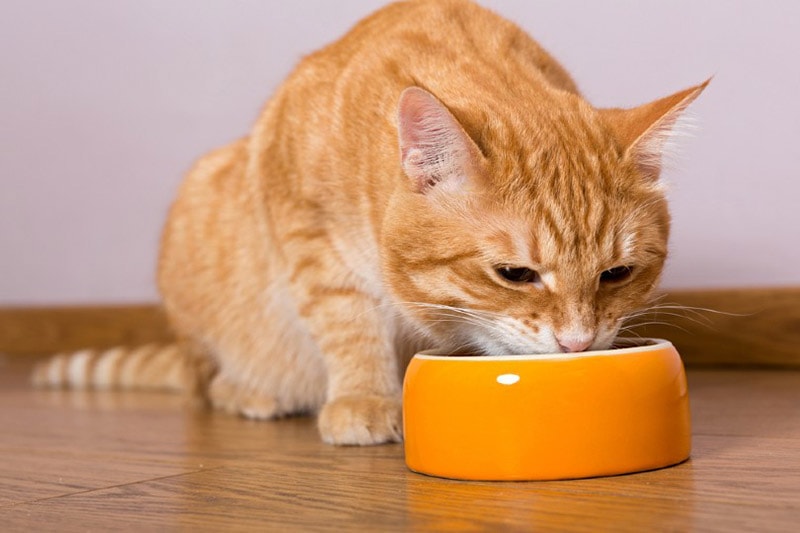From their long, elegant legs to their large perked ears and beautiful fur coat with spots, the Savannah cat is a beauty to behold. They are one of the most sought-after and expensive cat breeds today, with a price tag of up to $20,000.
This article focuses on the F3 Savannah cat, the third generation of this breed. The “F” stands for the term filial generation, referring to how many generations the Savannah cat is removed from their African serval ancestry.
The F1 Savannah cat is the first generation of the breed, having an African serval father. The F2 Savannah cat is the second-generation offspring (with an African serval grandfather), and the F3 Savannah cat is the third-generation offspring, having an African serval great-grandfather.

Earliest Records of the F3 Savannah Cat in History
To understand the history of the F3 Savannah cat, let’s go back to when the first-ever Savannah cat was born.
In 1986, Judee Frank took in a male African serval cat that she named Ernie, which mated with her Siamese female cat without her knowledge. The Siamese cat then gave birth to a very unusual-looking female kitten in April of that year. This kitten, which Judee named Miracle, appeared to have most of Ernie’s physical characteristics, including a fur coat with spots, large perked ears, long legs, and a short tail.
Judee later gave this kitten to Suzi Mustacio, who renamed it “Savannah,” beginning the breed we now know as the Savannah cat. This kitten would later be referred to as the first-generation (F1) Savannah cat.
When Suzi took in Savannah, she bred her with a Turkish Angora when she was mature enough, resulting in the birth of second-generation (F2) Savannah kittens in April 1989. Unfortunately, only two of those kittens survived, one male and one female.
Suzi later sold the F1 female cat, Savannah, to Lori Buchko. Savannah again gave birth to F2 kittens. One of the F2 kittens, which Lori named “Kitty,” later gave birth to a red-spotted F3 Savannah male kitten.
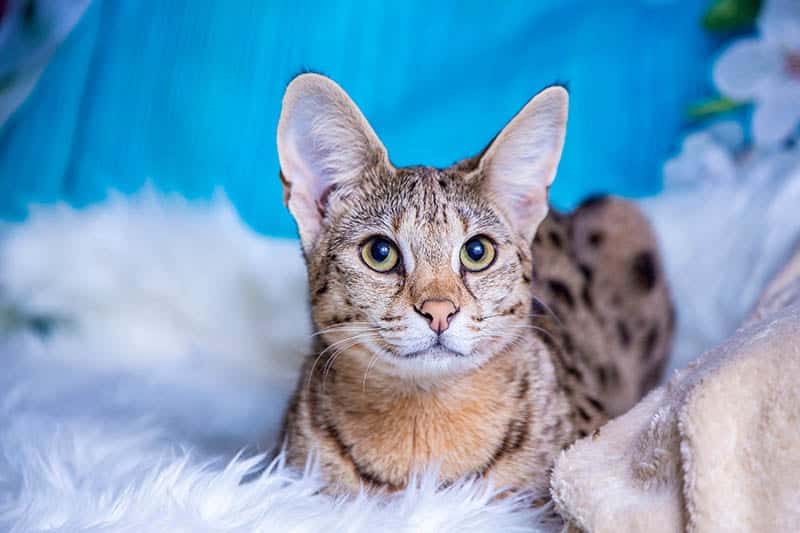
How the F3 Savannah Cat Gained Popularity
The F3 Savannah cat and the Savannah cat breed in general gained popularity once Lori Buchko sold “Kitty,” the F2 female Savannah cat, and her F3 male kitten to Patrick Kelley.
Patrick Kelley played a significant role in multiplying and popularizing the Savannah cat breed. Fast forward to October 2001, he and several other Savannah cat breeders pushed for this breed to be given the “exhibition-only” status by The International Cat Association (TICA).
This status meant that any Savannah cat that was the third-generation (F3) offspring or later could participate in cat exhibitions. As a result, the F3 Savannah cat’s popularity grew, since people could now see them in cat exhibition shows.
Formal Recognition of the F3 Savannah Cat
The Savannah cat breed was formerly registered and recognized by TICA in 2001. However, it took a lot of effort for this breed to be recognized.
In 1989, Patrick Kelley, the individual who bought the F2 Savannah female cat “Kitty” and her F3 male kitten from Lori Buchko, met a man named Bill Stroufe at an auction in Missouri. Bill was selling several African serval kittens on behalf of his wife, Joyce.
Joyce was a cat breeder who had been breeding African servals, Bengal cats, and Caracals. Bill later introduced Joyce to Patrick and thus began the journey of popularizing the Savannah cat breed.
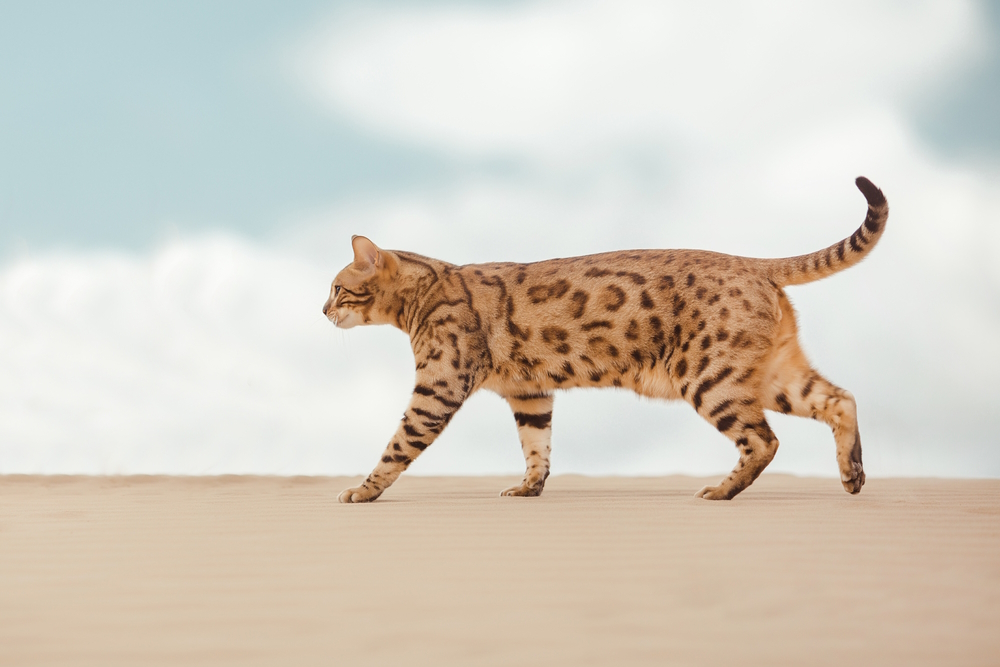
First-Generation Savannah Kittens
After several conversations about the Savannah cat breed, Joyce agreed to begin breeding first-generation (F1) Savannah cats. Patrick helped find suitable homes for these F1 Savannah kittens once they were born, which started popularizing this breed.
In 1996, Patrick began the long process of getting the Savannah cat breed recognized by TICA as a championship cat breed. He was assisted by Leslie Bowers, who was TICA’s executive secretary at the time to complete the first application to the association to accept the Savannah cat into its new breed program.
That same year, Patrick and Joyce wrote the first-ever Savannah cat breed standard and submitted it to TICA. Unfortunately, TICA placed a 2-year suspension on the process of accepting new cat breeds.
Another temporary suspension was placed in 1998, making the Savannah cat breed’s future bleak. Patrick, Joyce, and other Savannah cat breeders began losing hope of this unique breed ever being recognized by TICA.
However, during these two temporary suspensions, several cat breeders tried to popularize the Savannah cat breed, increasing their chances of being recognized by TICA. One breeder named Lorre Smith took some of her Savannah cats to several international cat shows. This enabled her to introduce them to several TICA officers and judges who interacted with and held the cats.
Lifting of the Ban
In 2000, TICA lifted the suspension, allowing the new breed program to resume the process of accepting new breeds. Several Savannah cat breeders, including Lorre Smith, got together to review the original Savannah cat breed standard.
Later that year, Lorre Smith submitted the new Savannah cat breed standard to TICA and requested that the breed be given the “registration-only” status. In February 2001, TICA gave the Savannah cat breed that status.
The breed was given the “exhibition-only” status later that year, allowing Savannah cats that are of the third generation (F3) and later to be exhibited in cat exhibition shows. In 2012, the breed got their “championship” status, enabling Savannah cats to compete against other cat breeds in cat shows.

Top 5 Unique Facts About the F3 Savannah Cat
It’s pretty evident that the Savannah cat is a breed in their own league. So, it’s no surprise that there are some very fascinating facts about this feline. Here are the top five unique facts about F3 Savannah cats.
1. They Love Water!
Cats are known for not being too fond of getting wet, but not the F3 Savannah cat! Savannah cats, in general, love playing with water. You might find them swimming in a small water pond outside or wanting to get in the shower with you.
However, the downside of this trait is that you may find it challenging to keep your F3 Savannah feline companion hydrated. This is because if you give them water using a bowl, they will concentrate more on playing with the water until the bowl is empty rather than drinking it. So, it’s advisable to find another way to give your cat water, such as using a cat water fountain to keep this from happening.

2. They Can Be Walked on a Leash
Similar to dogs, F3 Savannah cats can be walked on a leash. Of course, you first have to leash-train your cat. However, keep in mind that a Savannah cat’s neck cannot handle the same amount of pressure a dog’s neck can handle from leash-walking. So, it’s important to get a leash and harness that is specially made for Savannah cats, and most importantly, be gentle while leash-walking them.
3. F3 Male Savannah Cats Are Sterile
Typically, male Savannah cats are sterile up to the fifth generation, meaning F1, F2, F3, F4, and F5 Savannah male cats cannot reproduce, which explains why female Savannah cats are more costly than male ones.
4. They Are Very Good Jumpers
Unlike most cat breeds, the F3 Savannah cats are excellent jumpers. They can jump up to 8 feet high, so it’s advisable not to leave them outside unattended, or they can escape.
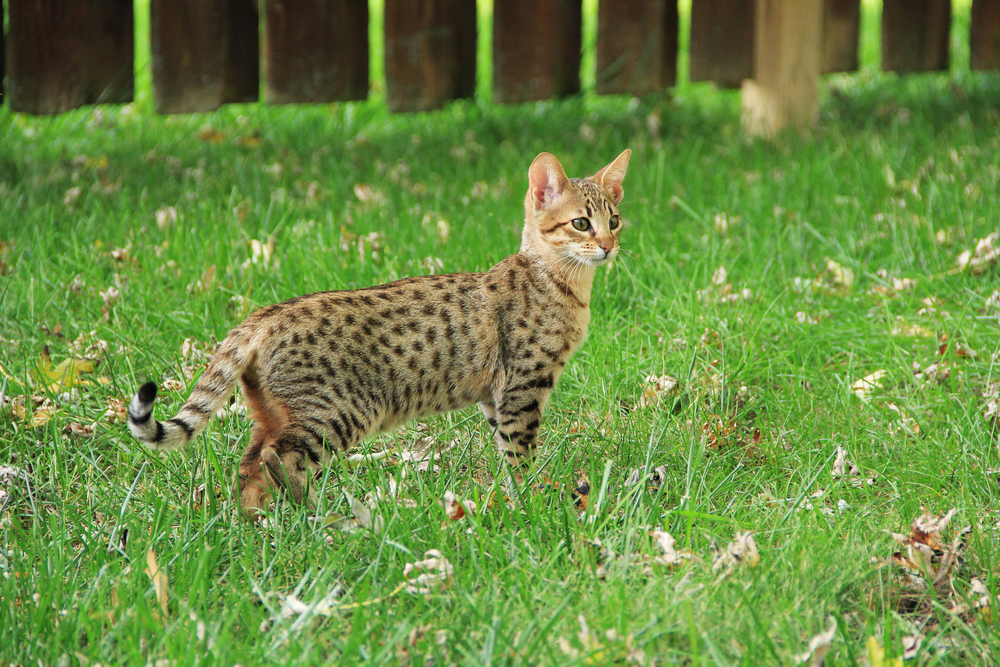
5. F3 Savannah Cats Are Highly Intelligent and Inquisitive
Savannah cats are one of the few cat breeds that are highly intelligent and inquisitive due to their African serval ancestry. So, you can train your F3 Savannah cat to obey simple commands.

Does the F3 Savannah Cat Make a Good Pet?
Absolutely. F3 Savannah cats make great pets. However, there are a few things you need to keep in mind if you’re looking to own one. For starters, they have tons of energy, so if you’re looking for a laidback cat, this isn’t the right breed for you.
They are also not suitable for households with smaller pets like hamsters, fish, and birds. Typically, Savannah cats have strong hunting instincts, so they see smaller animals as prey, which is dangerous for small pets.
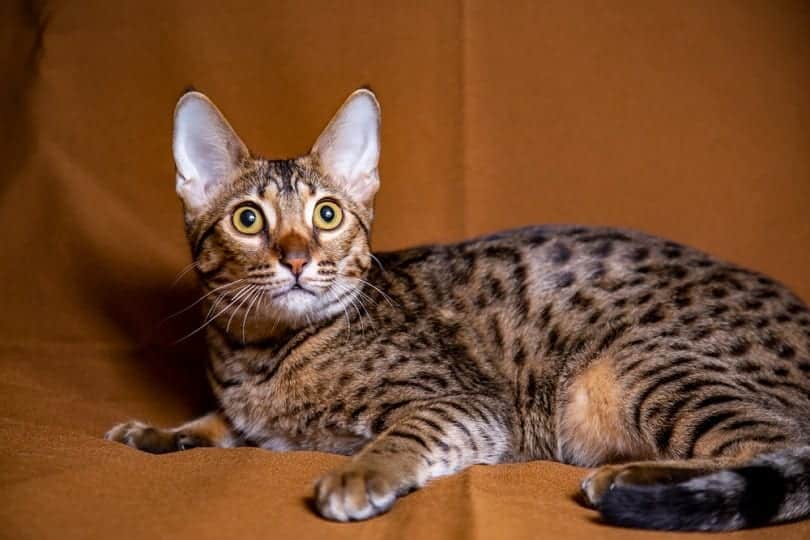

Final Thoughts
Savannah cats, in general, are highly unique, as they have both wild and domesticated personalities. F3 Savannah cats lean more toward the domesticated side since they are three generations away from their African serval ancestry. While the Savannah cat is a unique breed, they are just like any other cat: one that is full of love and affection. So, if you’re interested in owning a Savannah cat, don’t shy away from doing so.
Featured Image Credit: AJR_photo, Shutterstock
